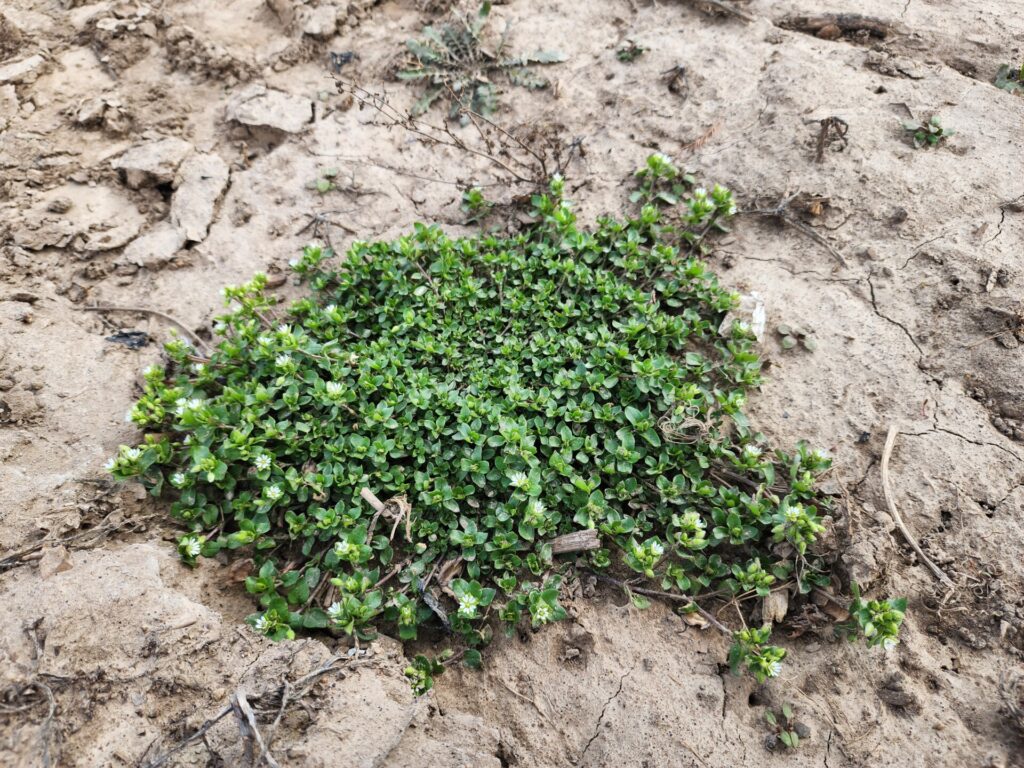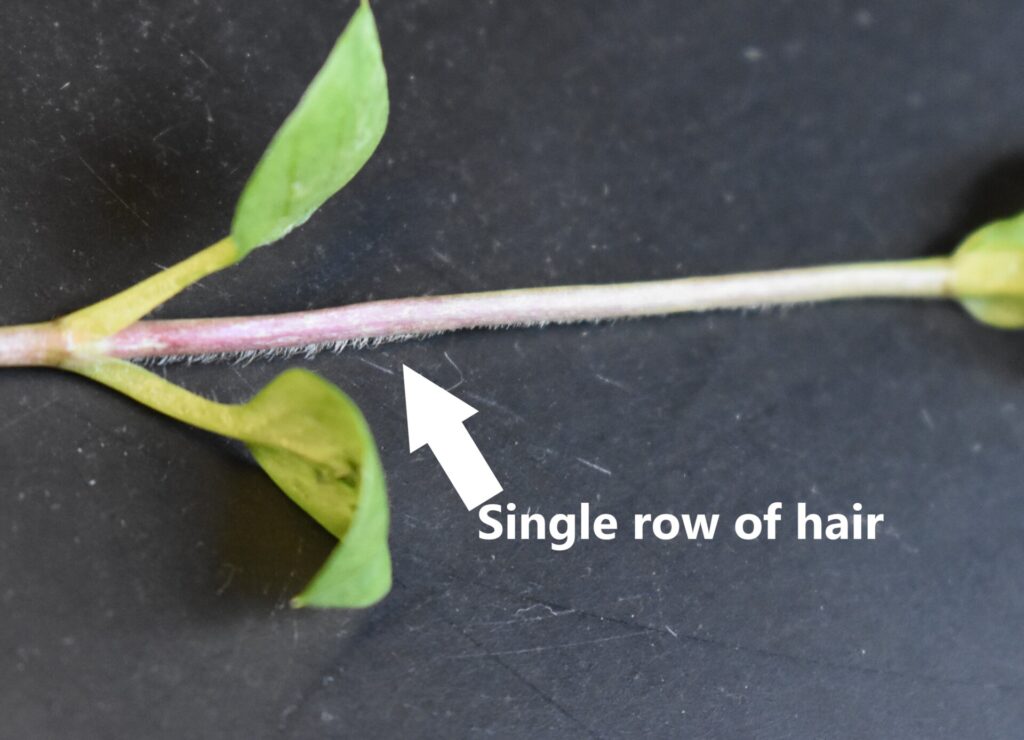Common names
Common chickweed, chickweed, starwort, starweed, bindweed, chicken-weeds, winter weed, satin flower, tongue grass, chickwhirtles, cluckenweed, mischievous Jack, skirt buttons, cyrillo, and white bird’s eye.
Fun fact
Did you notice how many common names refer to chickens? It turns out that this weed was used as a go-to in chicken and bird diets!
Latin name
Stellaria media.
- “Stellaria” is derived from the Latin “Stella”, which means “star”, referencing the star-shaped flower.
- “media”, also derived from Latin, means “mid-sized”, probably referring to the plant size within its genus.
Family
Caryophyllaceae (Pink family- the same family as carnations)
Life cycle
Common chickweed is an annual that can emerge in all seasons but mainly in spring and fall due to the high moisture and moderate temperatures (Figure 1). It emerges and reaches the seed production stage within approximately eight weeks, completing up to three generations annually.
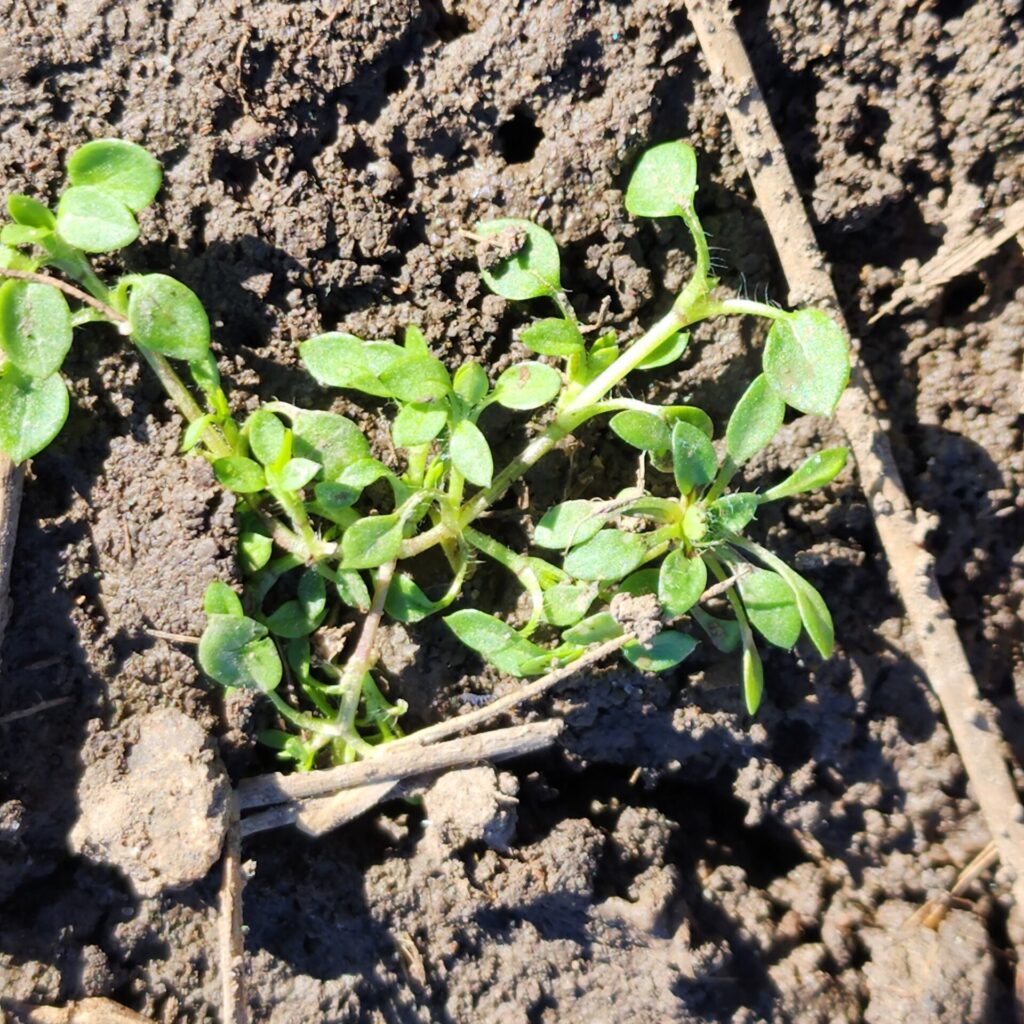
Figure 1. A common chickweed seedling growing in February 2023 in Lafayette, IN (Photo by Jeanine Arana).
Identification
Seedlings
Seedlings of common chickweed have ovate seed leaves (cotyledons). Young leaves appear in pairs on either side of the stem (known as an opposite leaf arrangement), rounded at the base and pointy at the tip (Figure 2).
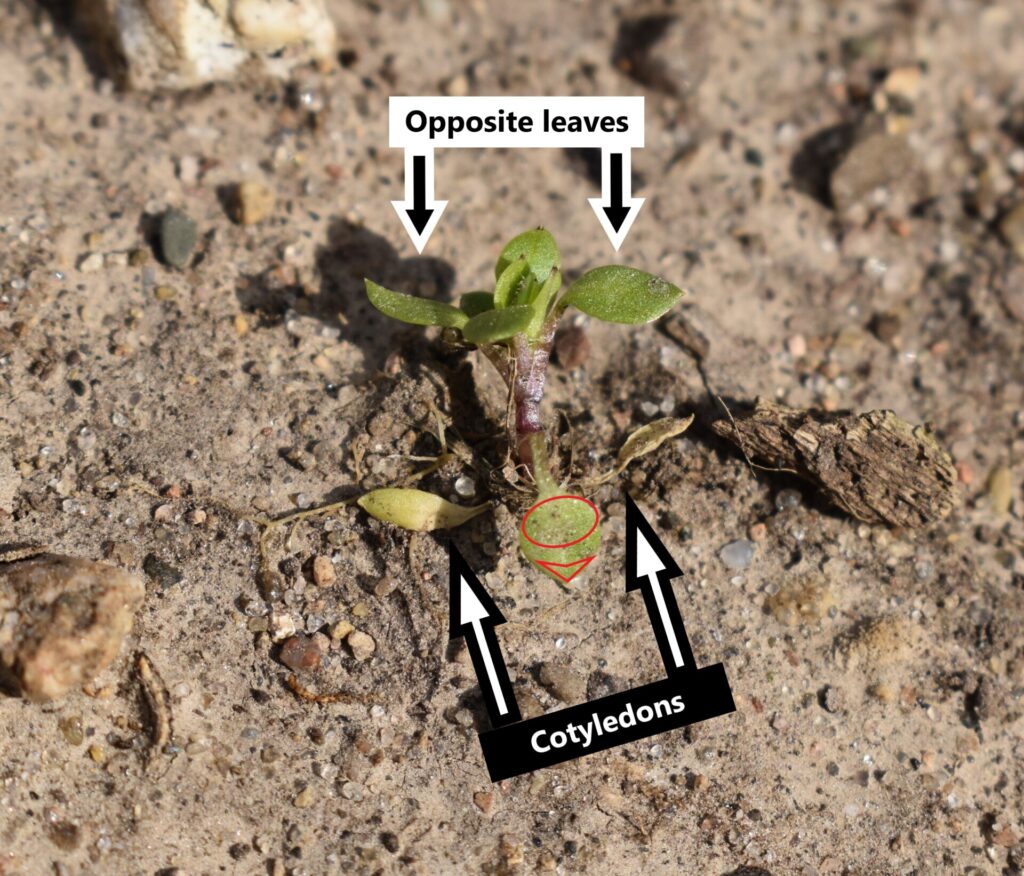
Figure 2. The cotyledons of a common chickweed seedling are ovate, and the leaves are opposite. The red circle and arrowhead delineate the leaf’s round base and pointy tip (Photo by Jeanine Arana).
Mature Plants
Mature plants of common chickweed grow along the soil and have branching stems, leading to a mat-forming growth habit (Figure 3). The stems feature one or two rows of hairs (Figure 4). The leaves and stems are light green, making them stand out among darker-green plants (Figure 5). Common chickweed may be mistaken for mouse-ear chickweed (Cerastium fontanum), but mouse-ear chickweed is densely covered with hair at all growth stages.
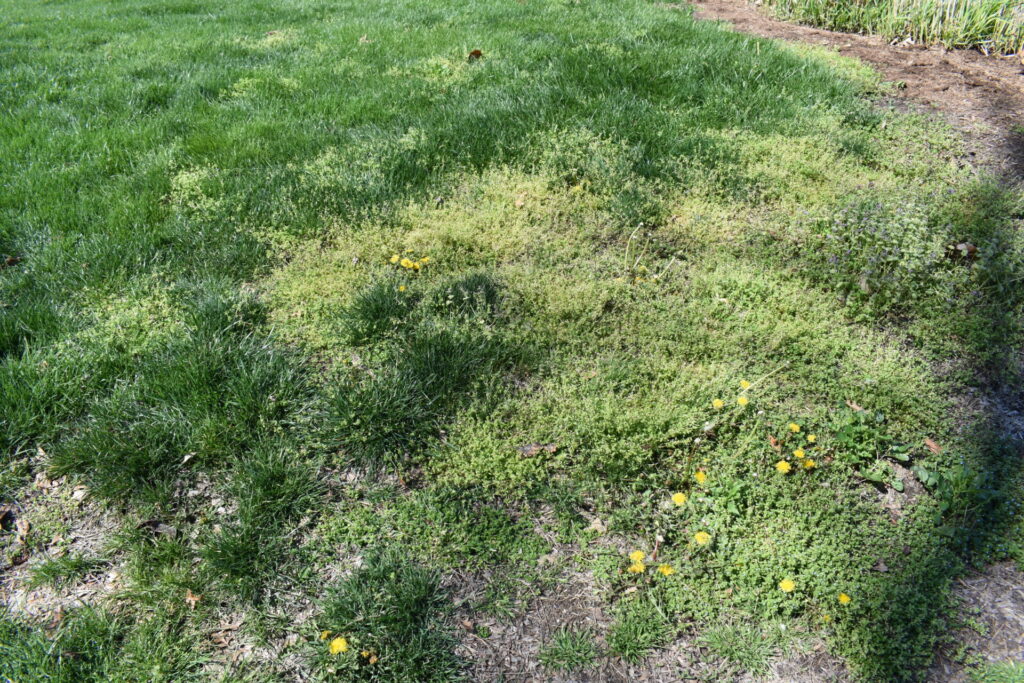
Figure 5. The patch of common chickweed is distinguished by its light-green color, which contrasts with the surrounding darker green vegetation (Photo by Jeanine Arana).
Flowering Plants
When in flower, common chickweed has white star-shaped flowers at the shoot tips. Each flower has five white petals that are deeply lobed, giving the appearance of having 10 petals (Figure 6). Mouseear chickweed’s flower can be distinguished because the five white petals are not deeply lobed (Figure 7).
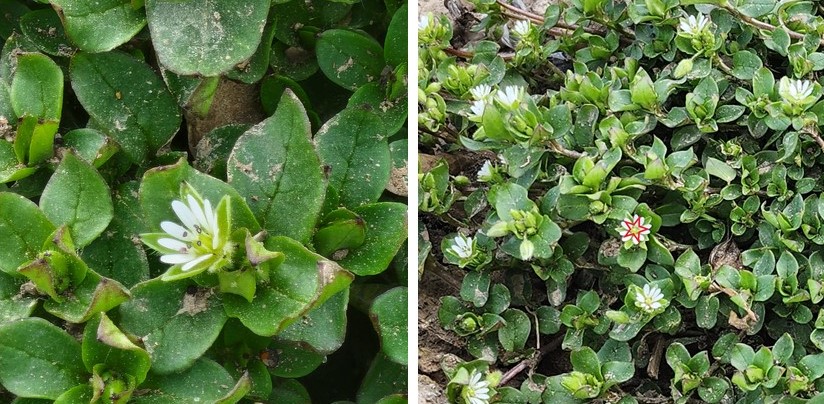
Figure 6. Chickweed’s star-shaped flowers have five deep-lobed, white petals. The red star delineates the flower’s shape (Photo by Jeanine Arana).
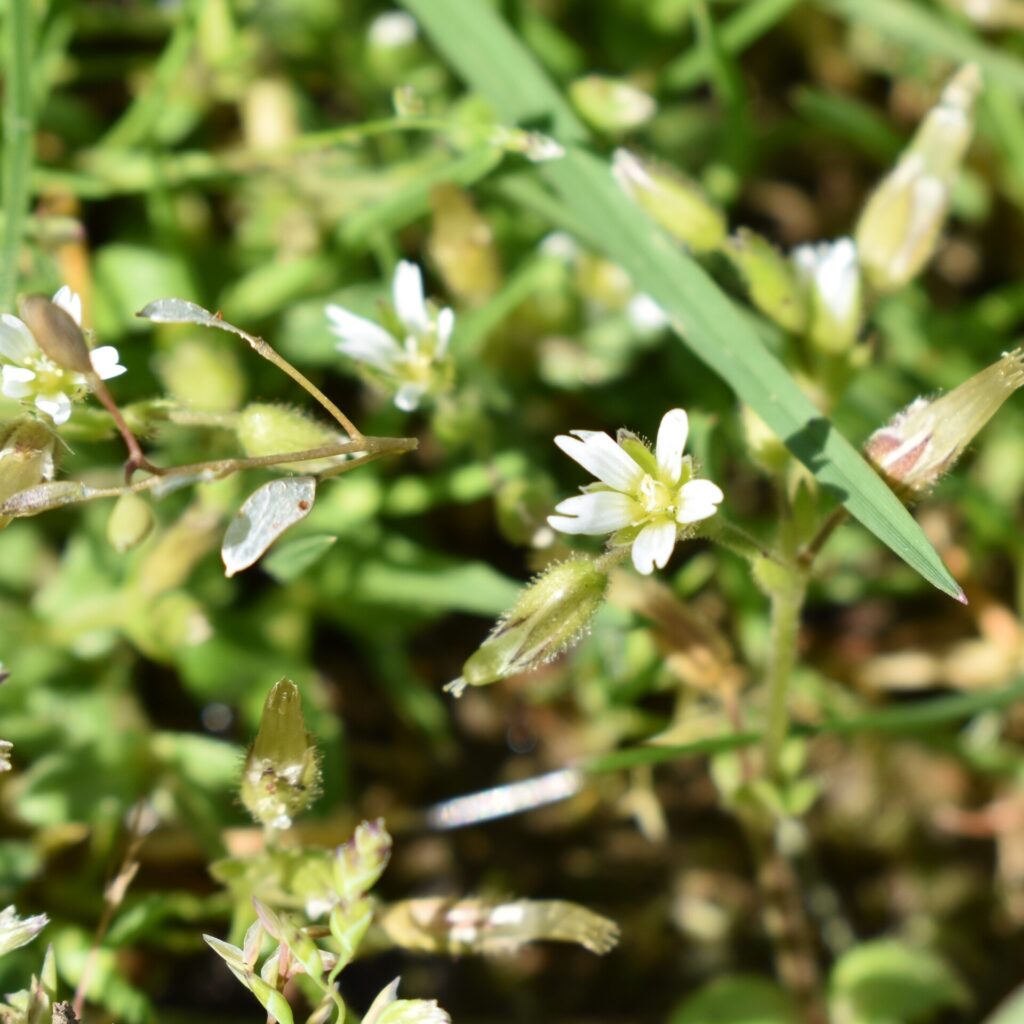
Figure 7. Mouse-ear chickweed star-shaped flowers have five shallowly-lobed, white petals (Photo by Jeanine Arana).
Reproduction
Common chickweed’s flower production is independent of light duration. Its flowers self-pollinate, and plants typically produce between 500 and 3,000 seeds.
Integrated weed management strategy
Cultural and mechanical practices
- Scouting: Conduct monitoring year-round to identify common chickweed patches and plan control strategies accordingly.
- Cover crops: Utilize cover crops to outcompete common chickweed for resources and provide a physical barrier to its growth.
- Plastic mulch: Acting as a physical barrier, plastic mulch hinders germinating common chickweed seedlings from reaching the soil surface. Ensure that planting holes are sized to fit only your transplant. Huge planting holes can allow weeds to emerge next to the crop.
- Organic mulch: Apply mulches like straw or wood chips to suppress common chickweed’s emergence and growth.
- Silage tarps: Silage tarps prevent germinating weeds from receiving sunlight. Tarps placed in the fall and removed in the spring will provide early control of common chickweeds.
- Hand-weeding, hoeing, and cultivation: Eliminate seedlings before seed production to prevent an increase in the weed seed bank.
- Flame weeding: Use flame weeding to control common chickweed in its early stages of growth.
Chemical control
- Pre-emergence (PRE) herbicides: If possible, apply PRE herbicides in the spring before common chickweeds germinate to inhibit seedling emergence.
- Post-emergence (POST) herbicides: If common chickweeds have already emerged, apply POST herbicides (combined with PRE herbicides when possible) to control them. Depending on your production system, this can be done instead of, or in addition to, spring tillage.
- Visit the Midwest Vegetable Production Guide (org) to learn which herbicides are labeled for the crops you intend to grow.
Alternative methods
- Doing nothing: For some, no management is also an option. Common chickweed provides ground cover that helps maintain an ecological balance and provides a food source for pollinators. Some people allow its growth for potential harvest for culinary use, such as salads.
- Living mulch: Some organic growers view common chickweed as an ally rather than a foe. They intentionally foster common chickweed’s reproduction, leveraging its presence as a living mulch to suppress the growth of detrimental weeds (weeds with robust stems, deep roots, creeping habits, and those from the same family as our crop that may harbor crop-damaging pests).
Continue Learning
To find more common chickweed pictures for identification, visit the Weed Science Society of America (WSSA) Weed Identification tab.
References
Defelice M.S. 2004. Common chickweed, Stellaria media (L.) Vill. – “Mere chicken feed?”. Weed Technology.
Hill E.C., Renner K.A., Sprague C.L. 2014. Henbit (Lamium amplexicaule), common chickweed (Stellaria media), shepherd’s-purse (Capsella bursa-pastoris) and field pennycress (Thlaspi arvense): fecundity, seed dispersal, dormancy and emergence. Weed Science.
Sobey D.G. 1981. Stellaria media (L.) Vill. Journal of Ecology.
